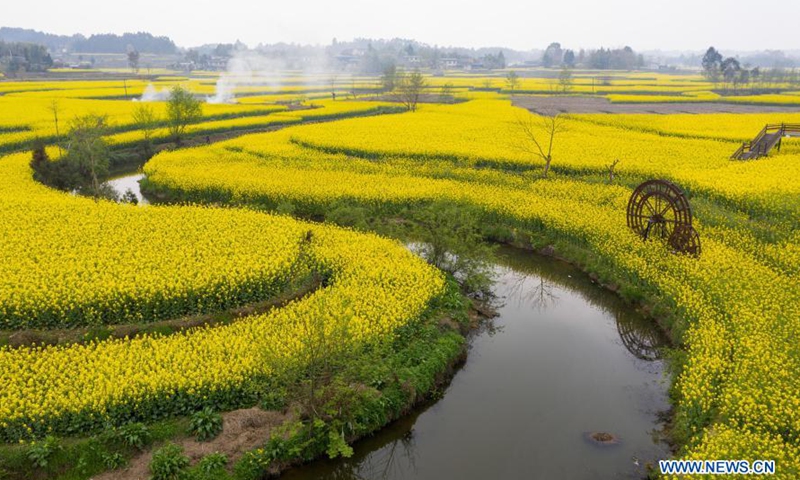
Aerial photo taken on March 14, 2021 shows the cole flower fields in Lianhua Village of Lexing Township in Anzhou of Mianyang, southwest China's Sichuan Province. Various measures such as organizing farming experience activities and promoting local specialties online and offline have been taken to achieve rural vitalization.Photo:Xinhua
The total area of cultivated land in China saw a net increase in 2021 as the country has curbed the trend of reduction in the size of cultivated land in recent years, said the Ministry of Natural Resources on Monday.
China achieved the target of 1.865 billion mu of cultivated land by 2020 set by The State Council, a number that is believed to be a red line for the protection of cultivated land in China for the sake of food security.
Over the past decade, natural resources authorities have taken a series of measures to strictly enforce the principle of ensuring 1.8 billion mu of arable land, said Liu Guohong, general engineer of the Ministry of Natural Resources, at a press conference on Monday.
The authorities have improved laws and regulations, including revising and implementing the Land Administration Law and the Black Soil Protection Law, said Liu.
National natural resources inspectors also strengthened supervision and inspection of local governments' performance of their responsibilities to protect cultivated land and establish a ledger of problems found.
Satellite remote sensing technology has also been put into use to carry out law enforcement and ensure land security, said Liu.
The Outline of the National Land Plan (2016-2030) issued and promulgated by The State Council in 2017 set the target of national arable land ownership at 1.865 billion mu by 2020 and 1.825 billion mu by 2030.
Public information shows that China's arable land was 1.918 billion mu by the end of 2019, a decrease of 113 million mu over ten years, which was mainly due to the adjustment of agricultural structure and the greening of land.
Experts believe that the "non-agricultural" and "non-food" use of cultivated land may have economic benefits from the local perspective, but it will bring a hidden worry in terms of food security.




